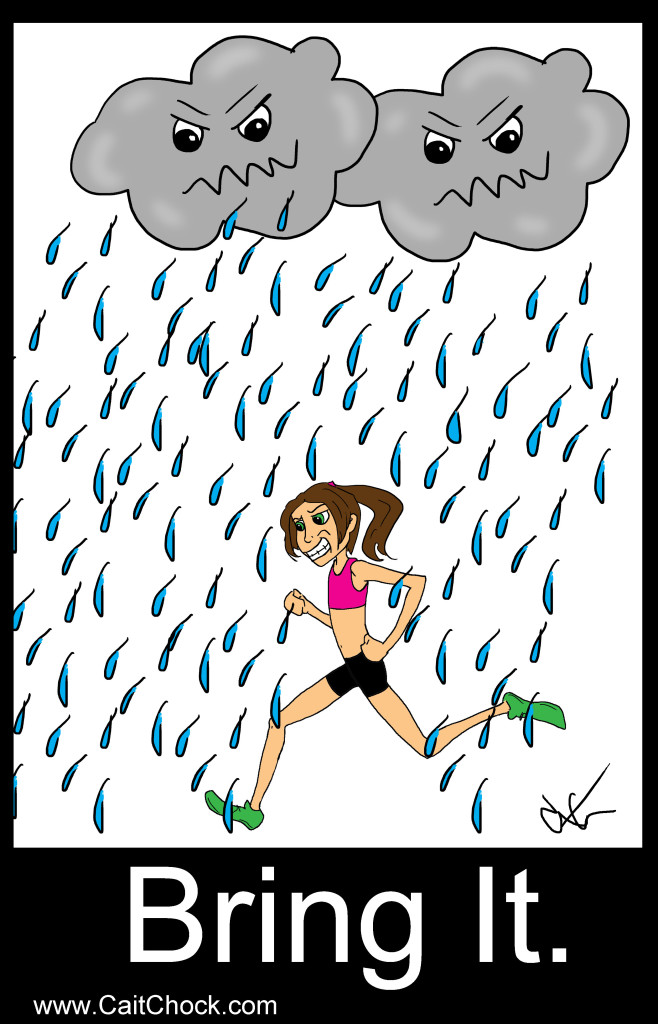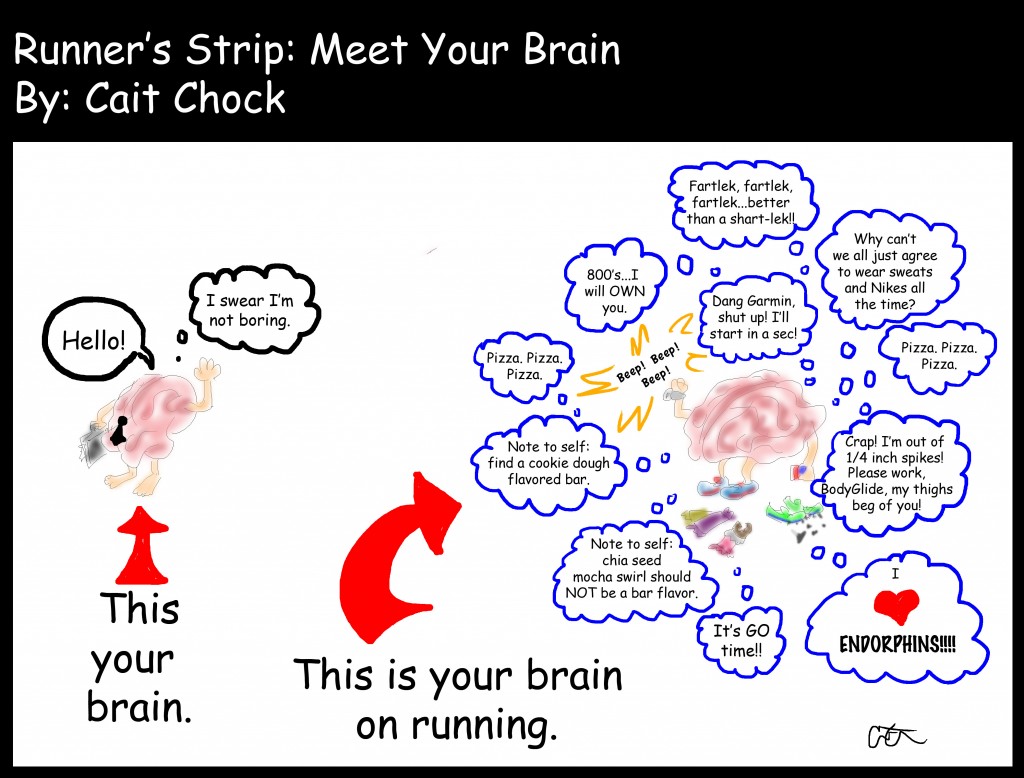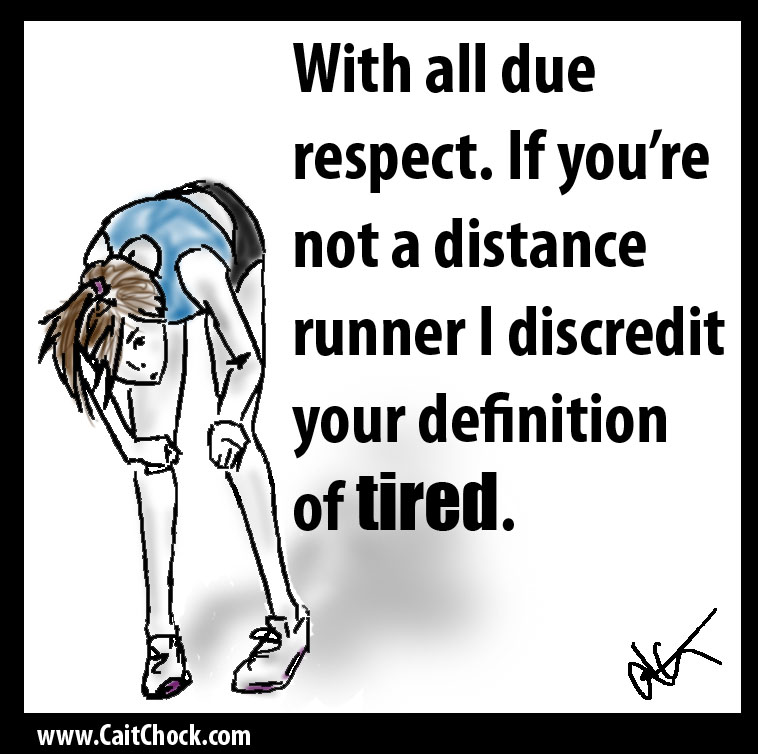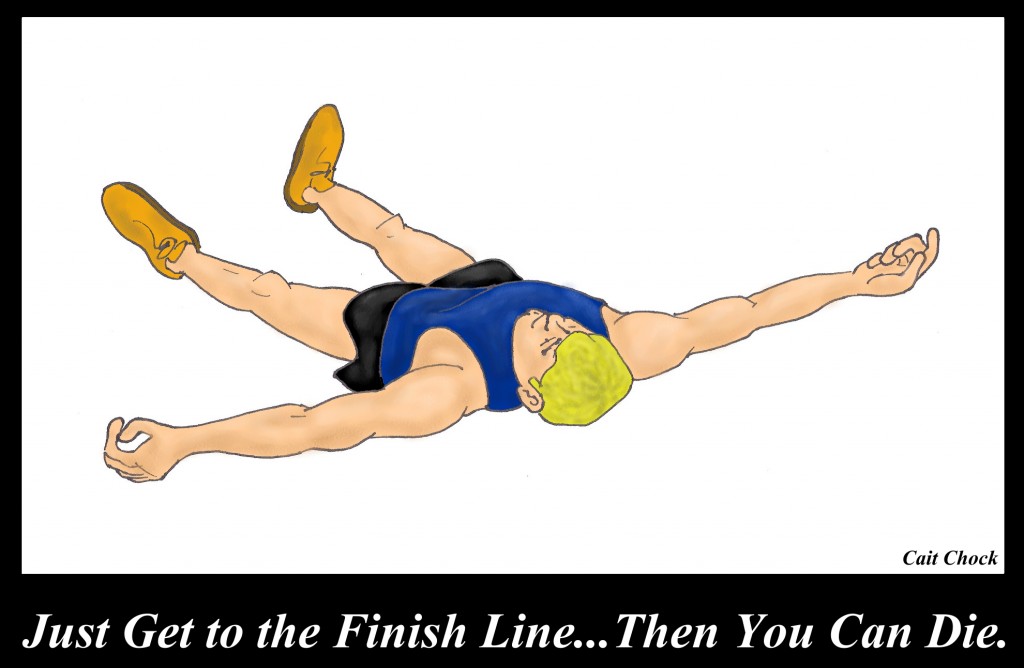So is this runner still alive? Yes, don’t worry, and rest assured I’ve been putting in my miles like a good little Arty Runnerchick as well. I apologize for my slight dip into obscurity for awhile here, but the GOOD news is I’ve been working on a few awesome projects for you. So do stay tuned for more on that. Lots of artage and wordage is to be expected.
Today is a special day. The Earth actually paused for a minute, did you feel it while you were out on your run? It’s actually my mom’s birthday!! She’s also the person responsible for getting me addicted to this whole running thing in the first place. 🙂

Growing up I watched my mom get up at the crack of dawn to get her run in before dashing us off to school and then go to work. I believe the best way to beat this whole slothy-obesity issue is for parents to lead by example. She did that for all of us kids. What’s more is she is a living, breathing, excuse-buster.
She’s popped out four kids, works two jobs, is Team Mom for my littlest brother’s Football and Rugby teams, goes to every game or event possible one of us chillun takes part in, and STILL makes fitness a priority. Like me, she’s not shy in saying her workouts help keep her sane.
My mom was also my training partner while I was still living in their house. I’ve run more miles with her than anyone else in the world. Easy days, she would be a trooper and get up for my runs at unholy hours because I had to be at school. So today I’m sharing some things I learned from the best woman in the world…
1) Consistency: Everyone non-runner or non-worker-outer in the world has asked us ‘freaks’, “What’s your secret?” There is no flippity-flip secret to staying in shape and getting faster, stronger, and better. It takes putting in the work every day. Motivating yourself when you’re not feeling it, and doing the work. Be consistent and I swear you’ll improve.

2) Hardest Part is Done: We’d joke after our runs, “Well, hardest part of the day is done!” It’s kind of true to a point. Running, even those ‘easy’ days, is never purely easy. There’s always some discomfort, that’s the point, it’s work. Running also makes you tougher in life; it teaches you to persist, persevere, and work towards goals even when things get tedious.
3) Easy Does Count: I’m not a hypocrite here, but getting back to those easy days…you need them. My coach loved that my mom would ‘keep me honest’ and make sure I didn’t go too hard on many of those easy days. Runners need those easy days so they can recover and then be able to actually go hard on those hard days.
4) Love the Run: Every runner goes through lulls in motivation, but there is a difference between a lull and burn-out. My mom taught me that you should never come to begrudge running, because if you do that too long you’ll lose your passion for it. Cherish the run, and if you see the signs of mental burn-out, catch it for what it is, do what you have to do, and find that SPARK again.
I have an infinite amount of respect for mothers who are leading by example. Staying fit, making running (or whatever workout) a priority, and showing their children that running and working out is freaking AWESME! 🙂
1) Did you grow up with parents who were fit?
I thought every mom ran before school up until I started doing sleep-overs at my friends’.
2) What is something you say when non-runners ask you, “What’s your secret?”
3) How do you keep your running spark alive?

















